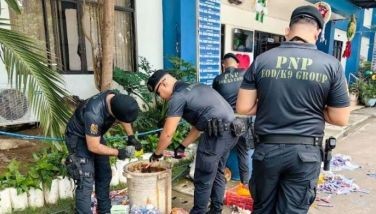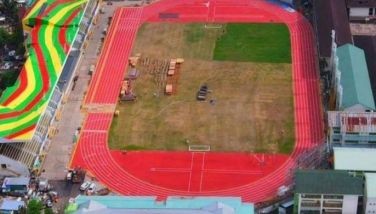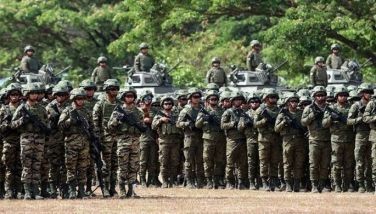Managing waste
CEBU, Philippines - Despite the existence of Republic Act 9003, proper waste disposal remains one of the unsolved problems of the country's urban areas. RA 9003 or the Ecological Solid Waste Management Act was enacted by Congress in 2009 in the hopes to solve the pressing garbage problem and in the process create a clean and sustainable environment for everyone.
In adhering to this law, then newly-elected Mayor Michael Rama, even before he could warm his seat, in 2010 ordered the closure of Cebu City's open dump site in Barangay Inayawan. RA 9003 dictates proper garbage disposal by way of segregation, and that was exactly what Rama directed all the city's 80 barangays to do. More than two years since his order was issued, the Inayawan landfill to this day is still stinking with old and fresh waste. City Hall has admitted it could not totally close it yet because it needs another site where it could dispose of its voluminous residual wastes. For the moment, the city transports its fresh waste-it generates an average of 220 tons per day--to Consolacion town's landfill, while the rejected types of wastes, which are said to be in greater bulk, are left in Inayawan, adding more layers to the already huge garbage mountains.
Towards the end of former Cebu City Mayor Tomas Osmeña's term, FDR-Integrated Resource Recovery Management, Inc. (FDR-IRRMI), a private firm which operates the region's first comprehensive waste management facilities in the City of Naga, made an assessment, as commissioned, on the Inayawan landfill. Margot Omega, FDR-IRRMI's project development manager, said at the time of their study, Inayawan had accumulated 2 million cubic meters of waste, old and new. This could possibly be 2.5 million today, she added. Omega said the best way for Inayawan is to clear all of its wastes, and convert the entire area to useable land. It would, however, take at least three years to implement the entire closure process: totally close the site, transfer every piece of garbage from the dump site to their plant for processing and place the bare land for treatment, she explained.
Almost all LGUs have their own dumpsites. In Cebu, however, the City of Naga has managed to properly close its dumpsite as per Department of Environment and Natural Resources policy. The city did this by privatizing its garbage collection. It commissioned FDR-IRRMI in 2011, and the company, under the 25-year agreement it signed with the city, implemented the closure of the Bairan dumpsite, and at the time collects and processes the fresh wastes. Omega said, for the last two years of operation, they were able to collect about 60,000 tons of mixed solid wastes in Naga. If all these had gone to Bairan dumpsite, instead of their recovery facility, these would have stockpiled and likely spilled over to the nearest river, she said.
In early 2011, the City of Naga, at that time itching to be rid of the headaches of its garbage collection brought about by its increasing population, signed a memorandum of agreement with FDR-IRRMI, to privatize its garbage collection.
Under the agreement, the city pays P750 to FDR-IRRMI for every ton of waste collected. At this time, the company had set up facilities in its seven-hectare property in Naga's Barangay Pangdan, where the whole operation is done. Based on the company's research, majority of the waste it collects is organic or "green" waste, composing 60 percent of the entire bulk. The recyclables only count 10 percent, while 20 and three percent are residual plastics and fibers/textiles, respectively. Diapers constitute five percent to the whole collection, and the rest are either inerts or gas (2 percent).
Since a good amount of the waste, or at least a ton a day, are diapers, the company, last year, tied up with the University of San Carlos research office to find better ways to process this kind of waste, when normally, at the dump sites, these are just left to rot. But diapers don't rot, so Omega said through their partnership with USC, they were able to solve that problem by separating the diaper's plastic and its other components, and segregate them into organic for composting and the cottony parts for alternative fuel.
From the households, offices or anywhere where there's garbage, trucks and trucks of mixed wastes are brought to FDR-IRRMI's plant to be sorted, processed or treated. The company has employed 95 workers, some of them were scavengers from Bairan dumpsite. At the plant, all plastics, metals and other recyclables are placed in different sections. Small stones and glasses for filling materials, while the greens/organics and residuals are processed for biofuel. And since more than half of the collected waste has a potential to become major component of alternative fuel, the company has tied up with an Austrian company, Innovation und Technik GmbH, for the realization of its proposed biogas plant. Paul Revalde, the company president, said the plant is set to be constructed at the end of this year, and is targeted to produce 1 megawatt of power. Once it starts operation, the plant is expected to supply the company's needs.
Omega said their main goal is for their partner-local government unit to achieve a "no landfill" and "zero waste" environment, as what RA 9003 is geared towards to for the whole nation.
And while he is happy that he has rid of the garbage collection problems, Mayor Valdemar Chiong of the City of Naga said he is also glad that the current set up has allowed them to save government funds for other basic services. He noted that on the first year of FDR-IRRMI's operation, Naga shelled out only P3 million as opposed to the P4 to P5 million allocation for garbage collection.
"I could say nakadaginot mi. From the first year, our budget was P4 to P5 million, but we only spent P3 million," the mayor said. He added that every year, since their garbage increases (from 15 tons in the past few years it is now 25 tons), budget for garbage disposal also has to increase. This year, the mayor shared they have earmarked P7 million from the annual budget for garbage collection alone. But Chiong said he is positive they can also save from that amount, apart from income generated from tipping fees of other local government units like Minglanilla, the cities of Lapu-Lapu and Carcar, which, being partners with FDR-IRRMI, pay P1,100 per ton of waste to the company. Ten percent of the outside collection goes to the city. Another positive result of this privatization, the mayor revealed, is that it frees them from the maintenance expenses of their old dumpsite in Barangay Bairan, which FDR took care as part of the 25-year contract. From a stinky dumpsite, the area to this day is now covered with lush vegetation.
Middle of last year, Minglanilla, which had the same problem as Naga, had also signed a memorandum of agreement with FDR-IRRMI, allowing the latter to take care of its waste problems. The cities of Lapu-Lapu and Carcar and some private companies have also done the same. Today, FDR-IRRMI processes an average of 115 to 120 tons of wastes daily from these LGUs and private companies. FDR's plant can reportedly process 300 tons of mixed solid waste every day.
Revalde admitted that for the time being the venture is not that lucrative, as it just reportedly gives them barely enough to pay for the company's operating cost: manpower, equipment maintenance, et cetera. He said that although their partners like the LGUs are supportive of their programs, he hopes that they will also help them in their research studies to lighten their present load while they are still perfecting their programs.As early as on its first year, the venture has earned the city a recognition from Makati City-based Federation of Philippine Industries Inc. (FPI) in December 2011, which awarded the city for being the most outstanding LGU in the practices of management of waste.
The Environmental Management Bureau (EMB), in its explanation on RA 9003, said that it is imperative that the said law must be implemented now before it becomes too late. "Why now? Because at the rate we are producing waste, we will soon find ourselves buried in our own trash," read EMB's overview of RA 9003, citing the collapse of Quezon City's Payatas dump site in 2000 which killed hundreds of residents. — /QSB (FREEMAN)
- Latest
























